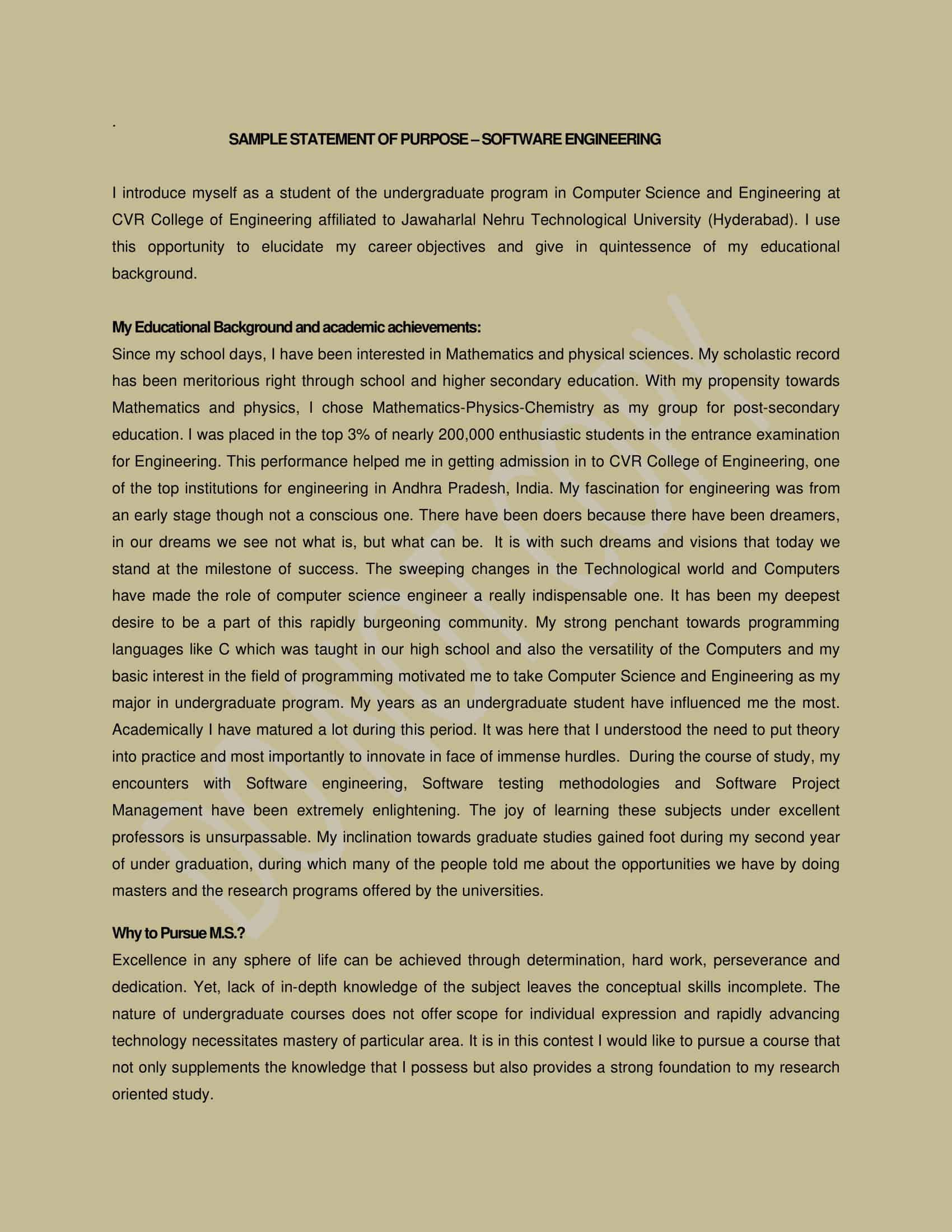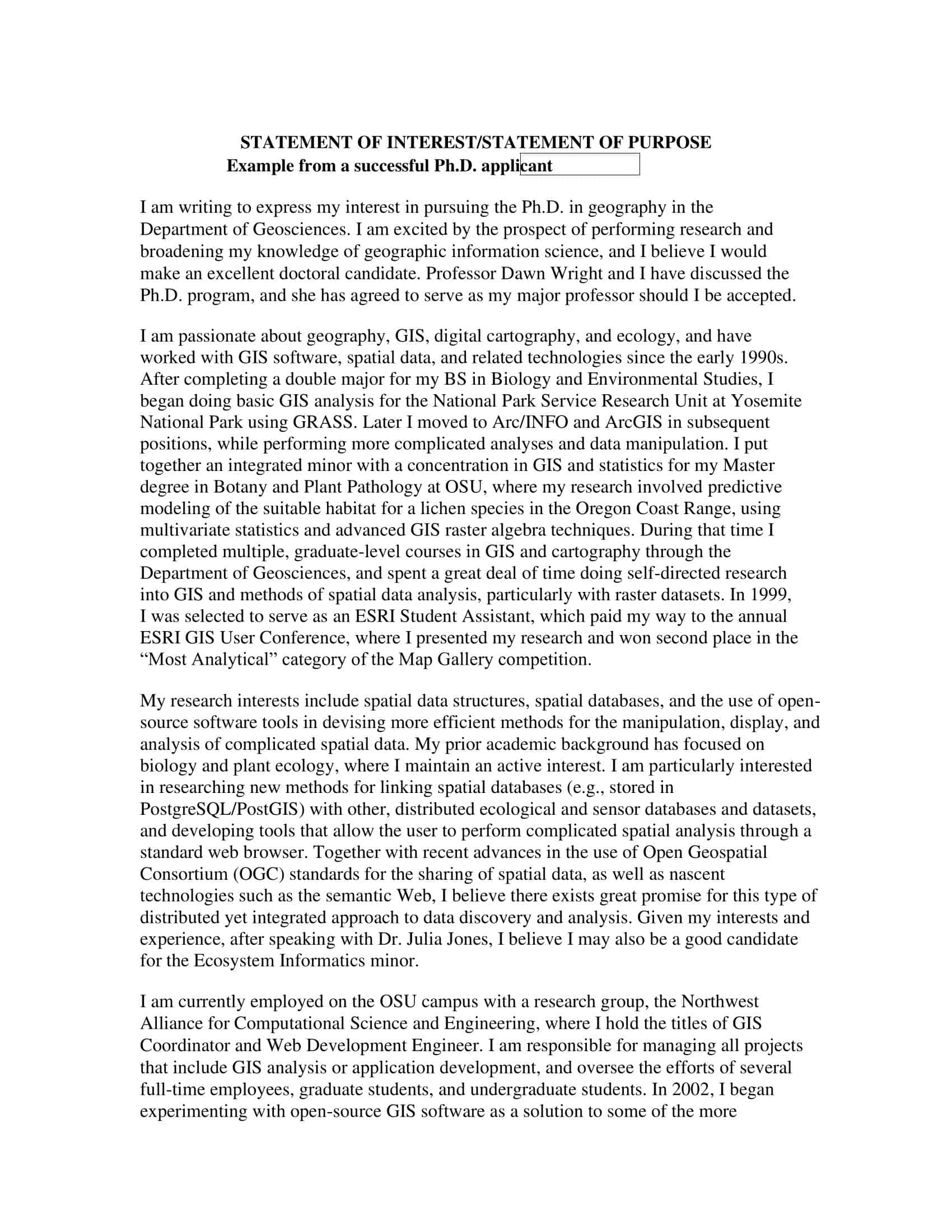Have you started writing your graduate school application essay? If not, no worries. We’ll show you the secrets of writing a statement of purpose that will help you get accepted. The most important thing to know is that you will need to write your statement of purpose in an essay format using the third person.
EssayPro will show you how to write a good statement of purpose example and will let you save your best work so that you can come back and view it later.
Table of Contents
What is a Statement of Purpose?

A statement of purpose is a one-page document that gives a brief overview of your academic and professional qualifications and interests and motivations. It’s written to impress the admissions committee, so they will want to interview you.
The statement is not just a summary of your resume; it is an opportunity to highlight your most notable accomplishments, discuss your long-term goals, and explain why you would be an excellent fit for the program. It also helps to provide additional context for any weaknesses or gaps in your application.
Statement of Purpose Templates
Clearly express your intentions and aspirations with our comprehensive collection of Statement of Purpose Templates. Whether you’re applying for a job, admission to an educational program, or a grant, our customizable and printable templates provide a structured framework for crafting a compelling statement. Our templates cover essential sections such as personal background, academic or professional achievements, career goals, and reasons for pursuing the opportunity.
By utilizing our Statement of Purpose Templates, you can effectively convey your passion, qualifications, and alignment with the organization or program’s values and objectives. Craft a powerful narrative, stand out from the competition, and leave a lasting impression with our user-friendly templates. Download now and create a statement of purpose that captures your unique story and propels you towards success.
Why is a Statement of Purpose Important?
A statement of purpose is an essential part of your application to a graduate program. It is a short essay describing why you are applying to the program, what you hope to gain from experience, and how you plan to contribute.
The statement is typically used as an admissions tool by graduate programs, but it can also be used for scholarship applications and postdoctoral fellowships.
It helps admissions committees decide whom to accept. The statement gives them insight into who you are, what motivates you, and where you want to go in life.
For example, if you are applying for a fellowship at MIT’s Sloan School of Management, a statement of purpose is required in addition to your CV and transcripts. If you’re applying for admission at Harvard Medical School, a personal statement is one of two required essays (the other is about career goals).
Why Do Schools Require an SOP?
Many schools require a statement of purpose as part of their graduate school application process. This is because they want to learn more about your background and interests so they can determine if you’re a good fit for the program. The SOP allows schools to narrow down the number of applications they receive, which helps them spend more time considering each applicant’s file in detail.
Some schools use the information from your SOP in their admissions decisions; others use it only as part of an initial screening process before moving on to other parts of your application packet.
Format of the statement of purpose
The statement of purpose (SOP) is a letter that you write to accompany your graduate application. It describes why you want to study a particular program and how it fits into your long-term goals.
The SOP’s length varies from program to program, but it’s typically around 250-300 words. Each school has its own requirements for formatting, so make sure you check these before writing.
The majority of applications ask for a personal statement, but there are some variations on this basic format:
Statement of purpose: This format is most commonly used by MBA programs, but it’s also used in other fields where applicants may not be required to submit GRE or GMAT scores. It usually consists of one main essay written in the first person (I), which explains why the applicant wants to attend the program and what they feel their strengths are as an applicant.
Personal statement: This variation is often used with Ph.D. programs that require GRE or GMAT scores from their applicants. The personal statement usually consists of two essays written in the third person (he/she) style — one explaining why one wants to attend the program.
Tips for writing a statement of purpose
While writing a statement of purpose, you must include all your strengths, skills, and experiences that can help you get admission. This essay should be written in such a way that it shows your interest in pursuing the program and makes the readers believe that you can handle the course with ease.
Here are some tips for writing a successful statement of purpose:
1) Start by introducing yourself. You can start with your name, age, gender, and nationality. In this section of your statement, you should also mention your academic and professional qualifications.
2) The next thing that should be mentioned is why you have chosen this particular university or college. It is essential because it will let them know how much research has been done by you before applying for admission to their university. Also, mention about the reasons behind choosing this particular branch of study over others so that they feel like they are saving time on someone who has yet to do his/her own research before applying for admission here.
3) The third and fourth paragraphs: why you’re the best candidate. These two paragraphs should be used to highlight why you are the best candidate for admission into the program. Use specific examples from past experiences where you could demonstrate leadership skills or use critical thinking skills that would benefit the program itself. This way, it will show that you are not just saying these things because they sound good but because they truly make sense in context with what you are applying for.
4) In the closing paragraph, you can start with your plans for the future. For example, if you have applied to study in a particular university program, you can mention that you are interested in pursuing a career in this field. You can also mention that you look forward to meeting this department’s professors and staff.
How long should a statement of purpose be?
The length of your statement of purpose should be between 500 and 700 words. This is the standard length for most essays, so it’s a good idea to start with this as your goal.
However, if you have a concise personal statement, it’s better to write more than less. The whole point is to ensure that the admissions committee gets to know you in-depth and understands why you want to attend their school. If your statement is longer, this may not happen.
If you have a very long personal statement due to extenuating circumstances (such as being raised in poverty), then this may also be too long. Make sure your essay flows well and doesn’t ramble on without purpose.
What should not be included in a statement of purpose?
The following are some other things that should not be included in a statement of purpose:
- Personal information such as your age, marital status, religion, and ethnicity.
- References to specific programs or departments within the university; can be included only if they are relevant to the program you are applying for.
- References to personal experiences such as travel or volunteer projects.
- Do not use words like “I,” “me,” “myself,” or “we.” Instead, use words like “one,” “one’s,” “oneself,” and “one’s own.” This will help you avoid making any grammatical mistakes in your writing.
- You should also refrain from using too many adjectives and adverbs, as they can dilute your message and make it sound weak.
Final Words
Just as the essay is crucial to college admissions, the same can be said for the statement of purpose. The statement helps showcase why you’re a good candidate for the school and aids in persuading admissions officers that you should be offered an acceptance to their school. While it might not seem like much, a great statement will draw the admissions officer in and make them want to learn more about you.
FAQs
How do you structure a statement of purpose?
The statement of purpose should follow a logical structure with an introduction, body paragraphs, and conclusion. The introduction should grab attention and state your goals. The body should highlight your relevant skills, experiences, and qualifications. The conclusion should restate your goals and summarize why you are a strong candidate.
What is the best format for a statement of purpose?
The best format is 1-2 pages with clear, concise paragraphs. Use headings to organize your content into sections. Leave white space between paragraphs to make it visually appealing. Choose a professional font and font size between 10-12 points.
How long should a statement of purpose be?
A statement of purpose is typically 1-2 pages single spaced or 2-3 pages double spaced. Follow any length requirements specified by the program, but aim for concision.
What tone should you use in a statement of purpose?
Use a tone that is confident, respectful, and professional. Avoid being overly casual or using slang. Show your passion and enthusiasm for the program while maintaining formality.
Should you address weaknesses in your statement of purpose?
Generally it is advisable to focus on the positives rather than addressing weaknesses in your application. However, if you need to explain gaps in your background or low test scores, do so briefly without making excuses. Emphasize the steps you’ve taken to improve.
What are the 3 steps to the statement of purpose?
The 3 key steps are:
- Hook – Grab attention with an interesting opening sentence.
- Body – Explain your academic and professional background and achievements.
- Conclusion – Restate your goals and summarize your fit.
- What are the 5 steps to the statement of purpose?
The 5 main steps are:
- Opening – Start with an interesting hook related to your goals.
- Background – Provide relevant details about your studies and experience.
- Skills – Highlight the knowledge and abilities you bring.
- Goals – State your academic and career objectives.
- Conclusion – Recap your fit and enthusiasm for the program.


























































![Free Printable Landlord Statement Templates [Word, PDF, Excel] Example 1 Landlord Statement](https://www.typecalendar.com/wp-content/uploads/2023/05/Landlord-Statement-150x150.jpg)
![Free Printable Statement Of Need Templates [Grants & Scholarship] 2 Statement Of Need](https://www.typecalendar.com/wp-content/uploads/2023/04/Statement-Of-Need-150x150.jpg 150w, https://www.typecalendar.com/wp-content/uploads/2023/04/Statement-Of-Need-1200x1200.jpg 1200w)
![%100 Free Hoodie Templates [Printable] +PDF 3 Hoodie Template](https://www.typecalendar.com/wp-content/uploads/2023/05/Hoodie-Template-1-150x150.jpg)
